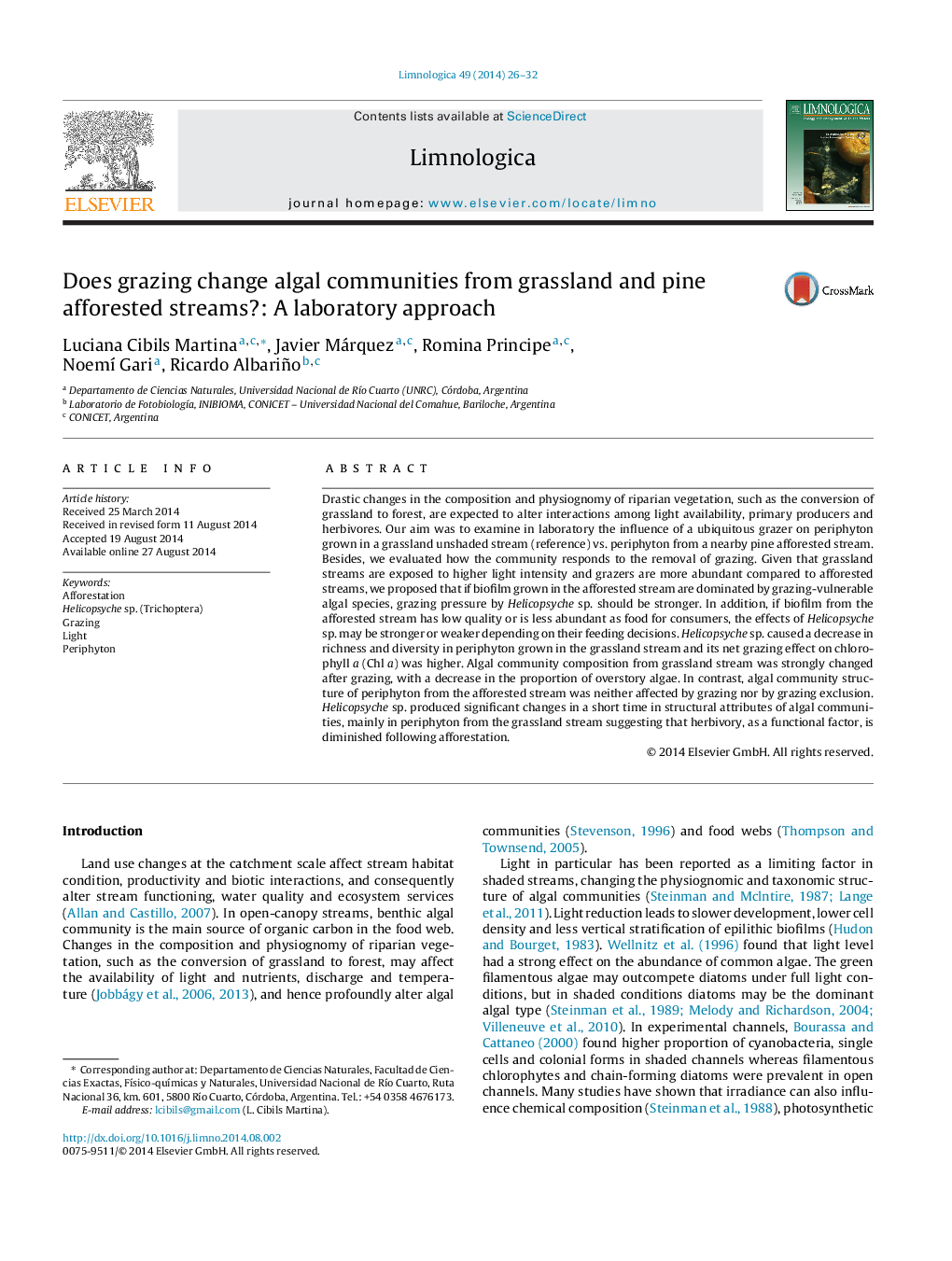| Article ID | Journal | Published Year | Pages | File Type |
|---|---|---|---|---|
| 4400364 | Limnologica - Ecology and Management of Inland Waters | 2014 | 7 Pages |
Abstract
Drastic changes in the composition and physiognomy of riparian vegetation, such as the conversion of grassland to forest, are expected to alter interactions among light availability, primary producers and herbivores. Our aim was to examine in laboratory the influence of a ubiquitous grazer on periphyton grown in a grassland unshaded stream (reference) vs. periphyton from a nearby pine afforested stream. Besides, we evaluated how the community responds to the removal of grazing. Given that grassland streams are exposed to higher light intensity and grazers are more abundant compared to afforested streams, we proposed that if biofilm grown in the afforested stream are dominated by grazing-vulnerable algal species, grazing pressure by Helicopsyche sp. should be stronger. In addition, if biofilm from the afforested stream has low quality or is less abundant as food for consumers, the effects of Helicopsyche sp. may be stronger or weaker depending on their feeding decisions. Helicopsyche sp. caused a decrease in richness and diversity in periphyton grown in the grassland stream and its net grazing effect on chlorophyll a (Chl a) was higher. Algal community composition from grassland stream was strongly changed after grazing, with a decrease in the proportion of overstory algae. In contrast, algal community structure of periphyton from the afforested stream was neither affected by grazing nor by grazing exclusion. Helicopsyche sp. produced significant changes in a short time in structural attributes of algal communities, mainly in periphyton from the grassland stream suggesting that herbivory, as a functional factor, is diminished following afforestation.
Keywords
Related Topics
Life Sciences
Agricultural and Biological Sciences
Aquatic Science
Authors
Luciana Cibils Martina, Javier Márquez, Romina Principe, Noemà Gari, Ricardo Albariño,
